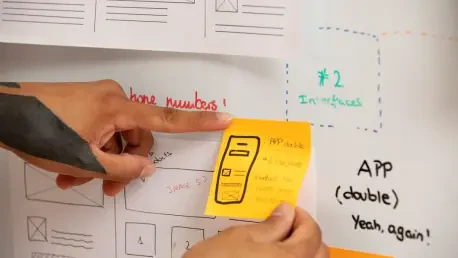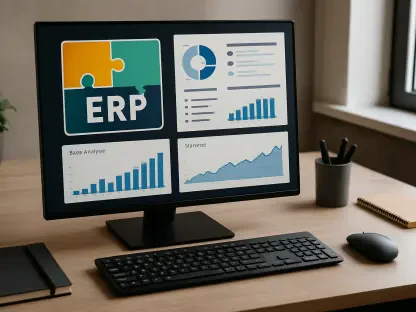Imagine a world where transactions happen with a single tap on a smartphone, where cash is a relic of the past, and where financial interactions are seamless across borders, reflecting the reality of today’s digital payment landscape. This vision is no longer distant but a tangible part of our current environment. In 2025, US proximity mobile payments are valued at over $800 billion, with projections soaring past $1 trillion by 2027. This explosive growth signals an unprecedented opportunity for businesses and entrepreneurs to carve out a space in a market hungry for innovative solutions. The purpose of this guide is to equip readers with a comprehensive roadmap for building a payment app, from ideation to launch, ensuring they can navigate the complexities of this dynamic industry.
The importance of entering the digital payment space cannot be overstated, especially as consumer preferences shift toward convenience and speed in transactions. Businesses that fail to adapt risk becoming obsolete in a rapidly evolving market. This guide delves into the critical steps required to create a payment app that not only meets user expectations but also adheres to stringent security and regulatory standards. It aims to demystify the process, offering actionable insights into market research, development models, user experience design, and monetization strategies. By following this structured approach, readers can position themselves to capitalize on a market that is reshaping global commerce.
The digital payment revolution is more than a trend; it is a fundamental shift in how money moves. Entrepreneurs and companies stand to gain from building solutions that address real user needs, whether through peer-to-peer transfers, mobile wallets, or international remittances. This guide provides the tools to understand market dynamics, prioritize security, and ensure scalability, helping readers create an app that stands out in a competitive field. With the right strategy, the journey from concept to a successful launch can transform a vision into a vital part of everyday financial interactions.
The Digital Payment Revolution: Why Build an App Now?
The digital payment sector is experiencing a seismic shift, redefining how transactions occur globally, and with US proximity mobile payments already surpassing $800 billion in 2025, the market potential is staggering. This figure is expected to exceed $1 trillion by 2027. This growth reflects a fundamental change in consumer behavior, driven by the demand for speed, accessibility, and convenience. Businesses and entrepreneurs who act now can tap into this massive opportunity, positioning themselves at the forefront of an industry that is only set to expand further.
Beyond sheer numbers, the urgency to build a payment app stems from the evolving expectations of users, who are increasingly reliant on mobile devices for financial activities. Whether it’s buying coffee or sending money across continents, the proliferation of smartphones and internet access has fueled this trend, creating fertile ground for innovative solutions. Companies that develop payment apps today can meet these needs, gaining a competitive edge by addressing pain points that traditional methods cannot resolve.
Moreover, the societal impact of digital payments underscores the importance of entering this space, especially as financial inclusion becomes a reality through apps that provide access to banking services for unbanked populations worldwide. By building a payment app, entrepreneurs contribute to a more connected economy while reaping the benefits of a growing user base. The time to act is now, as the market rewards those who innovate and adapt to the rapid pace of technological advancement.
The Evolution of Payments: From Cash to Digital Dominance
Historically, cash was the cornerstone of commerce, dominating transactions across the globe for centuries. Physical currency and checks were the primary means of exchange, with trust built on tangible interactions. However, this reliance on traditional methods began to wane as technology introduced faster, more efficient alternatives, setting the stage for a monumental shift in financial behavior that continues to unfold.
The acceleration of digital payment adoption gained significant momentum during global events like the COVID-19 pandemic, which necessitated contactless solutions. Health concerns drove consumers and businesses alike to embrace mobile wallets and online transactions, a trend that has only solidified since. Today, over 53% of Americans prefer digital wallets over cash or cards, illustrating a profound cultural shift toward technology-driven financial tools.
On a global scale, the transformation is equally striking, with two-thirds of adults now engaging in digital payments, according to recent data. This widespread adoption reflects not just convenience but also the growing trust in secure digital platforms. For anyone considering the development of a payment app, this shift is a clear signal of the market’s readiness for new entrants who can offer reliable, user-centric solutions amidst this ongoing evolution.
Step-by-Step Guide to Building a Payment App
Creating a payment app requires a methodical approach to ensure functionality, security, and user satisfaction. Below is a detailed breakdown of the essential steps to guide readers through the process from concept to launch, with actionable insights under each phase to address specific challenges and considerations.
Step 1: Research and Planning for Market Fit
Identifying Market GapsBegin by conducting thorough market analysis to pinpoint opportunities within the digital payment landscape. Examine existing apps to identify where they fall short, such as slow transaction times or limited accessibility in certain regions. Use industry reports and user feedback to uncover pain points that current solutions do not address. This step lays the foundation for a product that fills a unique niche, increasing the likelihood of adoption.
Understanding User NeedsEngage directly with the target audience through surveys, interviews, and focus groups to gather insights into their payment behaviors. Determine preferences, such as the desire for instant transfers or integration with other financial tools. Analyze demographic data to tailor the app’s features to specific user groups, ensuring relevance. This user-centric approach helps in crafting a solution that resonates with real-world demands.
Analyzing CompetitorsStudy the strengths and weaknesses of established payment apps to inform feature prioritization and differentiation strategies. Assess aspects like user interface design, transaction fees, and customer support to identify areas for improvement. Benchmarking against competitors reveals opportunities to innovate, whether through lower costs or unique functionalities. A clear competitive edge can significantly boost market entry success.
Assessing Technical FeasibilityEvaluate whether the envisioned app aligns with the available budget, timeline, and technological capabilities. Consider the complexity of integrating with banking systems or ensuring compliance with regulations. Consult with technical experts to understand potential constraints and resource requirements early on. This assessment prevents costly pivots later by ensuring the project remains viable from the outset.
Step 2: Choosing the Right Development Model
In-House Development Pros and ConsOpting for an in-house team provides maximum control over the development process, allowing for tailored solutions and direct oversight. However, it demands substantial investment in hiring specialized talent, such as experts in blockchain and cybersecurity. The high cost and time required to build such a team can strain resources, especially for startups with limited budgets.
Outsourcing for Cost EfficiencyOutsourcing development to external vendors can reduce expenses while providing access to a pool of experienced professionals. This model allows a focus on core business strategies while leveraging specialized skills. However, careful selection of reliable partners is crucial to avoid quality issues or communication gaps. Clear contracts and regular updates help mitigate risks associated with this approach.
Hybrid Model for BalanceCombining in-house oversight with outsourced expertise offers a balanced solution for complex projects. Internal teams can manage strategic direction and sensitive components, while external developers handle specialized tasks. This model ensures flexibility and scalability, ideal for payment apps requiring intricate integrations. Effective coordination between both sides is essential to maintain project alignment and quality.
Step 3: Designing User Experience and Architecture
Crafting Seamless UI/UXDesign an intuitive user interface and experience by mapping out user journeys from onboarding to transaction completion. Focus on simplicity, ensuring that navigation is straightforward even for non-tech-savvy users. Incorporate visual cues that convey trust, such as secure icons and clear instructions. Testing prototypes with potential users can refine the design before full-scale development begins.
Building Scalable System ArchitectureChoose an architectural framework that supports growth, such as microservices for handling increased transaction volumes. Alternatively, a monolithic design may suffice for simpler apps with limited initial scope. Ensure the system can integrate future updates without significant overhauls. Scalability in architecture prevents performance bottlenecks as the user base expands over time.
Step 4: Development with Security in Mind
Backend for Robust FunctionalityDevelop a secure backend with server-side logic, databases, and APIs to manage transactions reliably. Prioritize encryption and secure protocols from the initial coding phase to protect sensitive data. Regular audits during development help identify vulnerabilities early. A strong backend ensures the app can handle complex operations without compromising user information.
Frontend for User InteractionBuild a responsive frontend that integrates seamlessly with backend services, focusing on performance and accessibility. Ensure the interface is optimized for various devices and operating systems to reach a broad audience. Test user interactions to confirm smooth functionality across different scenarios. A polished frontend enhances user trust and encourages consistent engagement.
Integration with Payment SystemsConnect the app with payment processors, banking APIs, and third-party services to enable transactions. Test each integration point rigorously to prevent errors or delays in processing payments. Ensure compatibility with diverse payment methods, from credit cards to digital wallets. Thorough integration testing guarantees reliability when users perform financial activities.
Step 5: Testing for Reliability and Compliance
Functional Testing for Feature ValidationVerify that all app features operate as intended across a range of scenarios, including edge cases. Test for user registration, transaction processing, and notification delivery under different conditions. Address any discrepancies to ensure a flawless user experience. Comprehensive functional testing builds confidence in the app’s core capabilities before launch.
Security Testing to Prevent BreachesConduct penetration testing and code reviews to uncover potential vulnerabilities in the app’s infrastructure. Simulate cyber-attacks to assess defenses against data breaches or unauthorized access. Implement fixes promptly to strengthen security measures. This step is critical to safeguarding user trust and financial data.
Performance Testing for ScalabilityEvaluate the app’s ability to handle projected user loads without degradation in speed or reliability. Simulate high-traffic scenarios to identify bottlenecks in processing or server response times. Optimize code and infrastructure based on test results to support growth. Performance testing ensures the app remains responsive during peak usage periods.
Compliance Testing for Legal StandardsConfirm that the app adheres to standards like PCI DSS, along with regional financial regulations and app store policies. Engage legal experts to review compliance with data protection laws affecting user privacy. Rectify any non-compliance issues before submission to avoid delays or penalties. Meeting legal requirements is non-negotiable for a payment app’s credibility.
Step 6: Deployment and Launch Strategy
App Store Submission ChallengesPrepare for platform-specific guidelines when submitting the app to stores like Apple’s App Store or Google Play. Payment apps often face heightened scrutiny due to financial implications, requiring detailed documentation. Address reviewer feedback promptly to expedite approval. A well-prepared submission minimizes delays in reaching the market.
Infrastructure Setup for ProductionDeploy production servers, monitoring tools, and backup systems to support the app post-launch. Ensure redundancy to prevent downtime during unexpected failures or high demand. Configure real-time analytics to track performance and user behavior from day one. A robust infrastructure underpins a smooth rollout and sustained operation.
Securing Regulatory ApprovalsObtain necessary permissions based on the app’s features and target markets, such as licenses for money transmission. Collaborate with regulatory bodies to understand specific requirements in each jurisdiction. Allocate time for approval processes, as delays can impact launch schedules. Securing approvals is essential to operate legally and build user confidence.
Step 7: Maintenance for Long-Term Success
Regular Security UpdatesMonitor emerging threats and apply patches to address vulnerabilities promptly after launch. Update encryption protocols and security features to stay ahead of cyber risks. Communicate updates to users to maintain transparency about protective measures. Consistent security maintenance preserves the app’s integrity over time.
Feature Updates Based on FeedbackCollect user feedback through reviews and surveys to identify desired enhancements or new functionalities. Roll out updates that align with market trends and user expectations, such as adding contactless payment options. Prioritize features that drive engagement and retention. Adapting to feedback keeps the app relevant in a competitive space.
Ongoing Compliance MonitoringStay informed about evolving regulations to ensure continued adherence, avoiding potential fines or restrictions. Conduct periodic audits to verify compliance with data protection and financial laws. Adjust policies and features as needed to meet new standards. Proactive monitoring protects the app from legal challenges as it grows.
Performance Optimization for GrowthContinuously refine the app’s performance to handle increasing transaction volumes and user numbers. Upgrade servers or adopt cloud solutions to maintain speed and reliability under stress. Analyze usage data to anticipate scaling needs before issues arise. Optimization ensures a seamless experience as the app scales.
Core Features of a Winning Payment App
A successful payment app hinges on delivering essential functionalities that meet user needs while fostering trust, ensuring that every interaction is seamless and secure. Account linking must be protected, connecting to banks and cards with real-time verification to ensure reliability. Money transfer functionality stands as the core offering, enabling effortless sending, receiving, and requesting of funds. User authentication, incorporating biometrics and multi-factor methods, is critical for secure access and peace of mind.
Security measures like PIN codes, two-factor authentication, and fraud monitoring are indispensable for building user confidence. Transaction history should provide detailed, searchable records for transparency and convenience. QR code payments add versatility by supporting contactless transactions in diverse settings. Push notifications keep users updated with real-time alerts on transactions and account security, enhancing engagement.
Advanced features can differentiate an app in a crowded market. Options like bill payments, international transfers, and AI-driven fraud detection elevate utility and appeal. Budgeting tools that help track spending patterns can turn a simple payment app into a comprehensive financial companion. By balancing essential and innovative features, developers can create a product that not only functions well but also stands out.
Security and Compliance: The Non-Negotiable Foundation
Security forms the bedrock of any payment app, with no room for compromise, and ensuring the safety of user information is paramount in building trust and reliability. Compliance with PCI DSS standards is mandatory, encompassing six categories such as maintaining secure networks and implementing strong access controls. These requirements ensure that cardholder data remains protected through firewalls, encryption, and restricted access protocols. Adhering to these standards from the start prevents costly breaches and legal repercussions.
Encryption plays a pivotal role in safeguarding data, utilizing TLS for information in transit and AES-256 for data at rest, ensuring robust security. This dual approach guarantees that user details and transaction records remain unreadable to unauthorized parties. Fraud detection mechanisms, including machine learning for pattern analysis and real-time monitoring, add further layers of protection. These systems identify suspicious activities swiftly, minimizing risks to users and the platform.
Common security pitfalls must be avoided to maintain integrity, especially since ignoring compliance early in development can lead to significant redesigns or fines. Poor scalability in security infrastructure risks failure under high user loads, while inadequate testing leaves vulnerabilities exposed. Prioritizing robust security practices and regular audits during and after development is essential to uphold trust and operational stability.
Monetization Strategies for Sustainable Growth
Ensuring financial viability for a payment app involves adopting effective monetization models. Transaction fees, whether percentage-based or tiered, offer a direct revenue stream by charging for each payment processed. This approach scales with usage, though it requires balancing affordability to avoid deterring users. Transparent fee structures can encourage adoption while generating consistent income.
Premium features under a freemium model provide another avenue for profit, offering basic services at no cost while charging for advanced options like business accounts or priority support. Interchange fees, earned as a registered processor from card network charges, can also contribute significantly, despite the regulatory complexity involved. Additionally, revenue from interest on user balances or investment services presents opportunities for apps handling stored funds.
Advertising and partnerships round out monetization possibilities without directly burdening users. Targeted ads based on spending habits must respect privacy concerns to maintain trust. Collaborations with merchants for revenue sharing or referrals to financial products like loans can bolster income. A diversified strategy combining these methods ensures sustainability, supporting ongoing development and innovation.
Development Costs and Timelines: What to Expect
Building a payment app involves a wide cost spectrum, ranging from $40,000 for basic versions to over $600,000 for enterprise-grade solutions. Factors influencing expenses include the geographic rates of development teams, with hourly costs in the US averaging around $100 compared to lower rates in other regions. Platform choice, integration complexity, and team structure—whether in-house or outsourced—further impact budgets significantly.
Timelines for development vary by scope, with basic apps taking 4 to 6 months, while advanced or enterprise projects may span 12 to 18 months. Research, design, coding, testing, and compliance each contribute to the duration, requiring careful planning to meet deadlines. Rushing any phase risks quality, so realistic scheduling based on feature complexity and regulatory needs is advisable.
Post-launch, ongoing expenses for maintenance, security updates, and infrastructure scaling typically account for 15-20% of initial costs annually. Compliance monitoring and customer support also add to sustained investment as the user base grows. Understanding these financial and temporal commitments upfront allows for better resource allocation and prepares developers for long-term operational demands.
Future of Payment Apps: Trends to Watch
The payment app landscape in 2025 is shaped by current trends that prioritize user convenience and security, reflecting a growing demand for seamless and safe digital transactions. Biometric authentication, such as fingerprint and facial recognition, has become a standard for quick, secure access. QR code payments continue to gain traction for their simplicity in contactless transactions. AI-powered fraud detection is also prevalent, reducing false positives while enhancing protection against threats.
Emerging technologies are poised to further transform the sector with innovations that promise greater convenience and efficiency. Voice payments via smart assistants offer hands-free convenience, though security protocols are still maturing. Wearables like smartwatches facilitate small transactions effortlessly, while blockchain promises faster, cheaper cross-border transfers despite regulatory hurdles. These innovations signal a shift toward more integrated and accessible payment solutions.
Looking ahead, predictions suggest that AI will personalize user experiences by providing tailored financial insights. Invisible payments, where transactions occur automatically based on preferences, could redefine convenience in everyday scenarios. Global interoperability among apps and currencies may eliminate barriers, creating a seamless financial ecosystem. Staying attuned to these trends ensures that new payment apps remain relevant and competitive in an ever-evolving market.
Overcoming Challenges in Payment App Development
Developing a payment app comes with inherent challenges, starting with regulatory compliance, as financial laws differ across regions, requiring early collaboration with legal experts to navigate complex requirements. Starting in a single market before expanding allows for manageable compliance adjustments, reducing the risk of penalties or operational halts.
Security threats pose another significant obstacle, as payment apps are prime targets for cybercriminals. Embedding security as a core design principle, coupled with regular audits and penetration testing, helps mitigate risks. Staying updated on threat intelligence ensures defenses evolve with emerging dangers, protecting both users and the platform from potential breaches.
Building user trust is equally critical, especially for new entrants competing with established players. Transparency in data handling and showcasing security certifications can foster confidence. Focusing initially on low-risk use cases allows for gradual trust-building. Technical complexities in integrations can be addressed by leveraging established APIs and modular architectures, simplifying connections with banks and processors for smoother operations.
Why Partner with Experts for Your Payment App?
Navigating the intricacies of payment app development benefits immensely from collaboration with seasoned professionals. Experts in FinTech bring specialized knowledge in regulatory compliance, such as PCI DSS standards, ensuring the app meets legal benchmarks from the start. Their experience in crafting scalable architectures prevents performance issues as user numbers grow, a common pitfall for inexperienced teams.
Such partnerships also provide access to proven case studies and insights into user acquisition strategies. Teams with a track record in the industry can anticipate challenges like integration hurdles or security vulnerabilities, offering preemptive solutions. Their understanding of market trends helps in prioritizing features that resonate with current and future user expectations, enhancing competitive positioning.
Moreover, collaborating with specialists allows you to focus on business strategy while technical complexities are handled efficiently. From selecting an optimal tech stack to implementing robust fraud detection, expert input minimizes the risks of costly missteps. For anyone aiming to launch a payment app, aligning with a knowledgeable team can transform a challenging endeavor into a streamlined path.









